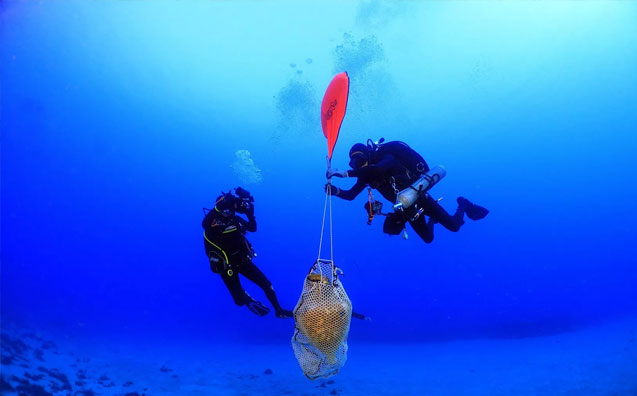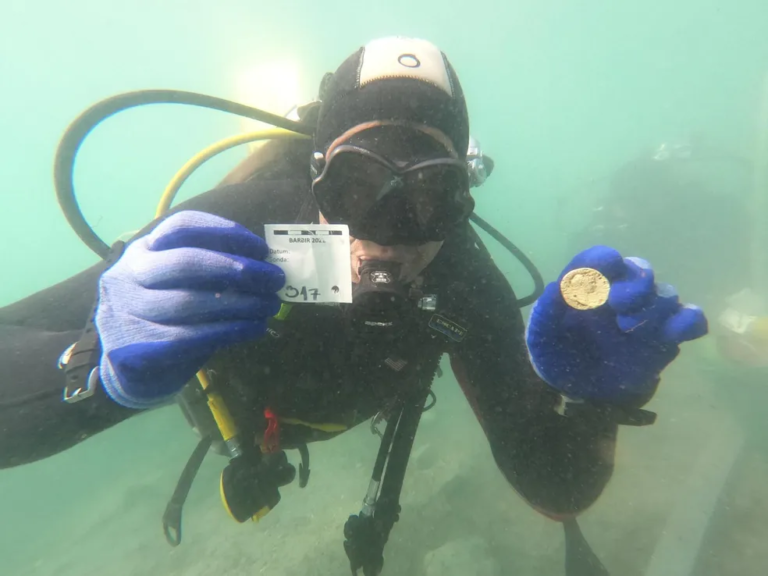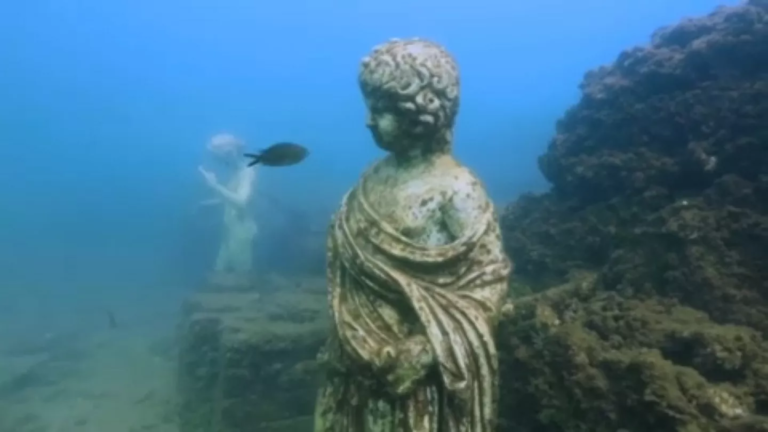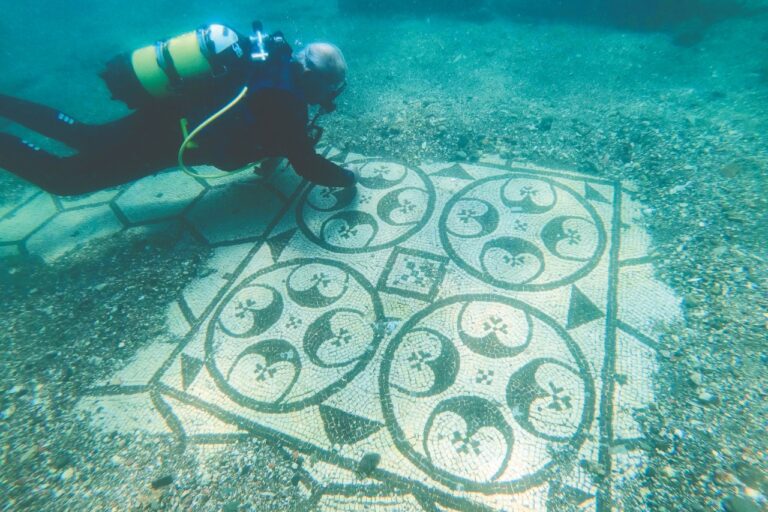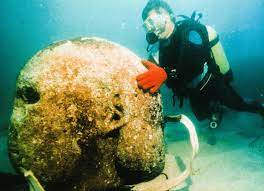The Impact of Recreational Diving on Archaeological Preservation
Recreational diving has become a popular activity worldwide, attracting enthusiasts of all ages and backgrounds. It offers individuals the opportunity to explore the ocean’s beauty and experience a sense of adventure below the surface. However, as recreational diving grows in popularity, there is a need to consider its impact on underwater archaeological preservation.
Archaeological preservation plays a crucial role in understanding and safeguarding our cultural heritage. Underwater sites, in particular, are of immense historical significance, as they often contain artifacts and remains that provide insights into past civilizations. Unfortunately, these sites are extremely vulnerable to the effects of recreational diving.
This article aims to examine the impact of recreational diving on archaeological preservation and explore potential solutions to minimize these negative effects. By revealing the challenges faced by recreational divers and the potential damage caused to underwater sites, we hope to foster awareness and promote responsible diving practices. Through collaboration and education, we can enhance the preservation of archaeological sites for future generations.
Table of Contents
The Significance of Underwater Archaeological Sites
Underwater archaeological sites hold immense cultural value and offer unique insights into our history and heritage. These submerged treasures are of significant importance, and their preservation is crucial for future generations. The allure of these sites lies in the mystery and wonder they hold beneath the waves.
One such famous underwater archaeological site is Alexandria’s sunken treasures. This ancient Egyptian city, once a hub of culture and civilization, now lies submerged in the Mediterranean Sea, waiting to reveal its secrets to archeologists and divers alike. Similarly, the RMS Titanic, a tragic symbol of human history, rests on the ocean floor, attracting explorers and enthusiasts from around the world.
Unfortunately, these sites are also vulnerable due to their location underwater. The fragility and uniqueness of underwater environments enhance the need for conservation efforts. The sediments and marine life surrounding these sites act as a delicate ecosystem that can be easily disturbed, leading to the potential loss of valuable information and artifacts.
The significance of these underwater archaeological sites cannot be overstated. They provide a tangible connection to our past, offering a glimpse into civilizations long gone. Each artifact and structure found underwater carries immense historical and cultural value, and their preservation is of utmost importance.
In the next section, we will explore the challenges faced by recreational divers and the negative impacts their actions can have on the preservation of these valuable underwater sites.
Challenges Faced by Recreational Divers
Recreational diving has experienced exponential growth in recent years, becoming a popular activity worldwide. However, despite its widespread popularity, the industry faces several challenges that have a direct impact on underwater archaeological preservation.
One of the main challenges lies in the limited training and awareness among recreational divers regarding underwater archaeology. While divers receive basic training to ensure their safety, there is often little emphasis on the importance of preserving archaeological sites and artifacts. This lack of education and awareness can result in accidental damage caused by divers unknowingly mishandling artifacts or disturbing the surrounding sediments.
Touching artifacts is a common occurrence among recreational divers, many of whom are not aware of the potential harm caused by their actions. This physical contact can displace fragile objects, disrupt delicate ecosystems, and even damage artifacts themselves. Furthermore, the mere presence of divers in these underwater environments can destabilize sediments, kicking up sediments and obscuring valuable archaeological finds.
To combat these challenges, it is essential to prioritize education and training within the recreational diving industry. Providing divers with a comprehensive understanding of underwater archaeology and the importance of preservation is crucial in minimizing accidental damage. This can be achieved through the incorporation of educational modules and awareness campaigns, ensuring that recreational divers are better equipped to navigate archaeological sites responsibly.
Furthermore, there is a need for increased collaboration between recreational divers and professional archaeologists. By fostering partnerships and encouraging divers to report any discoveries or potential issues, it becomes possible to monitor and protect archaeological sites more effectively. Responsible diving practices, including adherence to ethical guidelines, become paramount in ensuring the long-term preservation of these significant cultural and historical sites.
Addressing the challenges faced by recreational divers is essential in safeguarding our underwater archaeological heritage. By increasing training and awareness, highlighting the potential damage caused by accidental mishandling, and promoting responsible diving practices, we can strike a balance between the enjoyment of recreational diving and the preservation of our shared history. Only through these collaborative efforts can we ensure that recreational diving contributes positively to archaeological preservation for generations to come.
Negative Impacts on Archaeological Preservation
Recreational diving, while popular and captivating worldwide, poses significant challenges to the preservation of underwater archaeological sites. The very nature of recreational diving can inadvertently disturb or displace artifacts and disturb the surrounding sediments, leading to potential damage and loss of valuable historical information. Moreover, the lack of specialized training and awareness among recreational divers often results in amateur handling of artifacts, leading to the potential loss of context and scientific value.
One of the main contributors to these negative impacts is the diving industry, which, at times, promotes and encourages irresponsible diving practices. This can range from overcrowding at popular sites to the encouragement of touching artifacts, threatening the integrity and preservation of these valuable historical sites.
The disturbance caused by recreational divers can have long-lasting effects on the scientific and educational value of underwater archaeological sites. The displacement of artifacts and disturbance of sediments can disrupt the careful positioning and stratigraphy, depriving researchers of essential data. The information that can be gleaned from underwater archaeological sites is invaluable in enhancing our understanding of history and cultural heritage. However, the improper handling by recreational divers may result in the loss of vital clues and prevent the accurate interpretation of these sites.
The diving industry has a pivotal role in addressing these negative impacts. It is crucial for dive operators and professionals to promote responsible diving practices and encourage their clients to respect the archaeological sites they visit. By providing education and awareness campaigns, dive operators can ensure that recreational divers have a better understanding of the fragility and significance of underwater archaeological sites. These efforts, combined with stricter regulations and permits for diving at these sites, can help minimize the damage caused by recreational diving and protect these sites for future generations.
In conclusion, it is essential to acknowledge and address the negative impacts of recreational diving on archaeological preservation. Disturbing artifacts and sediments, the loss of context and scientific value, and the role of the diving industry in promoting irresponsible practices are significant concerns that must be tackled. By raising awareness, implementing stricter regulations, and promoting responsible diving practices, we can preserve our underwater cultural heritage and ensure that recreational diving contributes positively to archaeological preservation.
Case Studies: Notable Examples of Damage
Recreational diving, while popular and enjoyable for many, has had detrimental effects on underwater archaeological preservation. Several case studies serve as stark reminders of the potential damage caused by untrained divers exploring historical sites. One such example is the great Sphinx and sphinx figures found in the waters of Alexandria, Egypt. The constant influx of recreational divers has led to notable deterioration and erosion of these ancient artifacts, compromising their historical significance and cultural heritage. The damage inflicted upon these treasures highlights the urgent need for stricter regulations and education within the recreational diving industry.
Another troubling case involves the Titanic, a world-renowned underwater archaeological site. Recreational divers, driven by curiosity and fascination, often unknowingly cause damage to the Titanic wreckage. The disturbance of artifacts and sediments not only poses a threat to the site’s structural integrity but also hampers efforts to fully understand and preserve this iconic piece of history. This case study serves as a poignant reminder of the negative impact that recreational diving can have on underwater archaeological sites.
The consequences of such damage extend beyond the immediate loss of artifacts and physical structures. The lack of proper regulations and education surrounding recreational diving activities has led to a significant loss of historical context and cultural heritage. Archaeologists and historians are left with incomplete narratives, making it difficult to accurately piece together the puzzle of our past. The need for better regulations and education has never been more pressing in order to protect, preserve, and understand the rich history preserved beneath the waves.
Emphasizing these case studies serves as a call to action for the diving community, regulatory bodies, and archaeologists to address the pressing issues at hand. Stricter regulations must be implemented to limit access and ensure that only trained divers are allowed to explore underwater archaeological sites. Additionally, education campaigns focused on raising awareness among recreational divers are crucial. By promoting responsible diving practices and adherence to ethical guidelines, the negative impact of recreational diving can be minimized, preserving the integrity of underwater archaeological sites for future generations.
In conclusion, the case studies presented here serve as powerful reminders of the damage that recreational diving can inflict upon underwater archaeological sites. These examples underscore the urgent need for better regulations, education, and responsible diving practices to minimize harm and protect our shared cultural heritage. Through collaboration and awareness, recreational diving has the potential to contribute positively to archaeological preservation when conducted with care and respect for historical sites.
Mitigation Strategies and Solutions
To mitigate the negative impacts of recreational diving on archaeological preservation, several strategies and solutions can be implemented. The implementation of stricter regulations and permits for diving at archaeological sites is crucial. These regulations would ensure that only qualified and responsible divers have access to these sensitive areas. It would also help limit the number of divers and control their activities, preventing unnecessary damage to artifacts and the surrounding environment.
Furthermore, education campaigns should be promoted to raise awareness among recreational divers about the importance of underwater archaeological preservation. Diving organizations and certification agencies can play a pivotal role in including underwater archaeology modules in their training programs. By educating divers on the fragility and cultural value of archaeological sites, they can encourage responsible diving practices and reduce accidental damage.
In addition to education, partnerships between divers and professional archaeologists should be encouraged. Collaboration between these two groups can lead to better site monitoring and protection. Professional archaeologists can provide essential expertise and guidance to divers, ensuring they handle artifacts responsibly and minimize the disturbance of surrounding sediments. By working together, divers and archaeologists can contribute to the preservation of these historical sites for future generations.
Perhaps the most critical aspect of mitigating the impact of recreational diving is highlighting the importance of responsible diving practices and adherence to ethical guidelines. Divers must be aware of the potential consequences of their actions and understand the need to treat archaeological sites with respect. This includes not touching or removing artifacts, avoiding kicking up sediments, and reporting any potential discoveries to relevant authorities. By emphasizing responsible behavior, divers can actively contribute to the preservation of underwater archaeological sites.
In conclusion, the negative impact of recreational diving on archaeological preservation can be mitigated through a combination of stricter regulations, education campaigns, partnerships between divers and professional archaeologists, and the promotion of responsible diving practices. By implementing these strategies and solutions, we can ensure the long-term preservation of these invaluable historical sites. It is essential for the diving community, archaeological organizations, and governing bodies to work together and prioritize the delicate balance between exploration and preservation.
Conclusion
In conclusion, the impact of recreational diving on archaeological preservation is significant and often detrimental. As highlighted throughout this article, the limited training and awareness among recreational divers regarding underwater archaeology contribute to accidental damage and disturbance of artifacts and sediments. This, in turn, leads to the potential loss of context and scientific value of archaeological sites.
To minimize the negative impacts of recreational diving on archaeological preservation, collaboration and awareness are key. Stricter regulations and permits for diving at archaeological sites can help ensure that only trained and responsible individuals have access to these fragile environments. Additionally, education campaigns are necessary to raise awareness among recreational divers about the importance of preserving historical and cultural heritage underwater.
Moreover, partnerships between recreational divers and professional archaeologists can play a crucial role in site monitoring and protection. By working together, divers and experts can create a sustainable approach that allows for the exploration and appreciation of underwater archaeological sites while minimizing damage.
While recreational diving may have a negative impact on archaeological preservation, there is also potential for it to contribute positively. When conducted responsibly and with care, recreational divers can actively participate in the preservation and conservation efforts of underwater cultural heritage. By adhering to ethical guidelines and embracing responsible diving practices, divers can contribute to research, documentation, and the overall understanding of history.
In conclusion, it is essential to recognize the impact of recreational diving on archaeological preservation, but it is equally important to acknowledge the potential for collaboration and responsible diving practices to mitigate negative effects. By striving for awareness and fostering a sense of responsibility among divers, it is possible to preserve archaeological sites for future generations to explore and appreciate.

